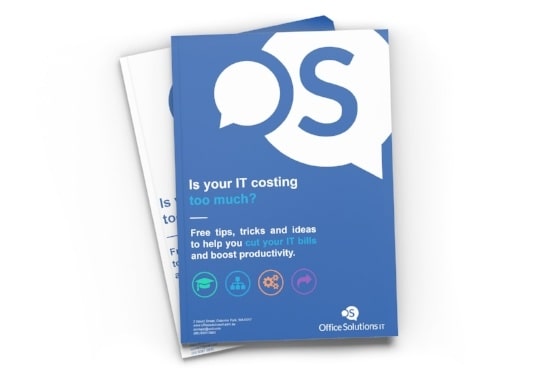A managed IT service provider is a company that allows businesses to outsource their IT services to them. MSPs (Managed Service Providers) offer many benefits to companies, but the most notable is the cost savings.
Managed IT costs are typically lower than hiring an in-house IT staff, and therefore, it is very tempting for companies to use MSPs.
However, before signing any contracts with an MSP, you need to do your research. You need to make sure that they are worth your time and money.
If you are seeking to work with a managed IT service provider, it is important to understand what they provide and how much it can cost so that you can make the right decision for your business.
Costs are routinely one of the most frequently asked questions by businesses when contracting managed IT services.
According to Gartner’s latest Worldwide IT Spending Forecast, IT service spending is projected to increase by 9.8% or an equivalent of 1.1 billion dollars in 2021. Other segments such as data centre systems, enterprise software, devices, and communication services are expected to increase in spending as well.
There is no specific number of how much you’ll spend on a Managed IT solution. But one thing’s for sure it can be a worthy investment if you’re with the right Managed Service Provider (MSP).
Do you think Managed IT services cost too much?
One of the benefits of outsourcing Managed IT Services is you have access to industry experts without having to hire them full-time or provide them with the tools and training they need. Although you could DIY these IT tasks yourself, why bother when you can hire someone with deep knowledge and expertise to do it for you?
Although having in-house IT has its merits, you can’t deny that it is time-consuming and not cost-effective in the long run.
Managed IT Services can get quite expensive depending on your IT needs and the overall size of your business (whether it be a small business or a large corporation) and users; however, we do have to ask the question, is your data security worth it? Having secure data for yourself and your clients is essential to your reputation and the function of your business.
What affects the pricing of your Managed IT services?

The costs of a Managed IT service provider vary per business, and there are many factors to consider that can influence how much you’ll invest. Here are the most common factors that will affect the overall cost of managed IT.
Users
How many users will you need? The more users you have, the more devices (computers, mobile devices, tablets, etc.), workstations, and licenses you will have to cover.
You can estimate how much you’ll spend per user per month by knowing what you want managed. You should coordinate with your Managed IT Provider to know the best service and payment options for your business.
We have programs that are designed to help you keep your technology costs in check. Our Managed IT Services help you control your technology investment without giving up the support and services you need.
Servers
How much processing data does your business require?
If the number of needed servers goes up, so will the price of your support. Managing the server and additional features, such as security and backup solutions come at a separate fee. The support price for servers varies depending on the size of your business as well as the type of equipment you’ll use. MSPs usually offer a monthly fee for this service.
If you already have an existing server, coordinate with your MSP on how you could strengthen your server’s data security and backup. But if you don’t have one, your MSP will recommend one for you to store and process your data.
Data Storage
How much data are you managing daily? Data management and backup also play an integral factor in the pricing of your Managed IT costs. The more intricate and sensitive your data, the harder it is to manage which equates to a higher fee.
With the risks of cybercrimes, malfunctioning hardware and software, and accidental or intentional disasters, a business can't afford not to have data management and security. Managing information technology is more than just updating and upgrading existing equipment. It is also about protecting it from damage and ensuring that the company runs smoothly, without any downtime or loss of data.
Data storage and retention varies depending on your needed backup features and storage space. Will you only need cloud storage? Or do you also need data storage with backup and maintenance?
Licenses, Services, & Upgrades
Aside from users, services, and storage, you’ll also need to consider the business goals you’re trying to achieve with the MSP.
Are you looking to establish cyber security in your company network?
Perhaps improve staff productivity and flexibility with an office suite like Microsoft 365? Or perhaps re-establish your IT infrastructure from the ground up?
Similar to the other three, the Managed IT service pricing for this factor varies depending on your needs and the size of your company. Coordinate with your MSP on what licenses, services, and upgrades you’ll need to include in your Managed IT package. They should recommend the best options, provide information on what would undergo in the transition process, and plan expected technological upgrades in the future.
How much do Managed IT services cost?

Each Managed IT service provider's pricing model is different. And when you’re considering hiring an MSP, it’s hard to get an exact figure of how much you'll be spending without getting a detailed quote. All in all, it boils down to picking the package that best fits your business from perks to cost.
Here at Office Solutions IT, we offer a couple of pricing models for businesses of all types and sizes, catering to their needs at reasonable costs.
A La Carte
A la carte is a pick-and-choose type of IT service pricing model.
You get to have fun picking and paying only for the services you need.
Unlike the all-inclusive pricing, you won't be paying for unnecessary services as a part of a package. This feature makes the a la carte pricing model perfect for companies with an existing in-house IT team that only needs extra support, such as break-fix and monitoring.
Although it costs significantly less compared to all-inclusive models, their perks are limited.
If you want some minor services covered, check out the options here.
All-inclusive pricing
Unlike the a la carte model, the all-inclusive pricing model offers a wide range of services joined together in one flat fee package. You’ll get to leverage different aspects of your Managed IT package without worrying about additional costs that will surprise you by the end of the month.
The typical all-inclusive pricing model for Managed IT services depends on service package, user, or device. These three variations allow businesses room for technological growth, capacity, and flexibility that is not available for a set-and-forget package like the a la carte model.
If your business needs predictable monthly IT spending, this is the package for you.
What Managed IT services should bring to the table?

As more businesses open to the idea of going for a Managed IT Service provider to maximize resources and save money, it opens another question: how would you know that you’re getting your money's worth? What business benefits should it bring you in the long run?
Business Focus
Although they can be costly, outsourcing to managed IT service providers can save your precious company time and resources.
How?
Because instead of having your in-house IT team focus on troubleshooting and answering IT-related staff queries, they can instead focus on tasks that will contribute to the success of the entire business.
Expertise
As MSPs employ experts in various IT fields, sometimes with certified skills, you have access to expert individuals that would have otherwise been difficult (and expensive) to hire in-house. Sad to say, the all-around office IT guy isn’t going to be enough if you need complex solutions to inevitable IT problems such as system downtime, data breaches, and infrastructure upgrades.
For your IT to be set the right way, you need experts to do it for you. That’s the cost-effective way!
Predictable expenses
By outsourcing to a Managed IT Service Provider, you can predict expenses due to the fixed monthly fee making the company budgeting task seem like a walk in the park. Ideally, your MSP shouldn’t have any unexpected costs that could ruin your IT budget. But if there were, they should inform you beforehand.
With this perk up your sleeve, you can shift your budget to other areas and save business resources on recruitment and training.
Usually, businesses now adopt a hybrid IT approach.
They have both an in-house IT team and a Managed IT Service Provider to achieve maximum business results. Your in-house team focuses on company-specific IT projects, while your MSP can support you in the background. This setup reduces your technological on-site infrastructure and in-house IT's workload. Don’t forget the office space, as well as utility and equipment bills.













